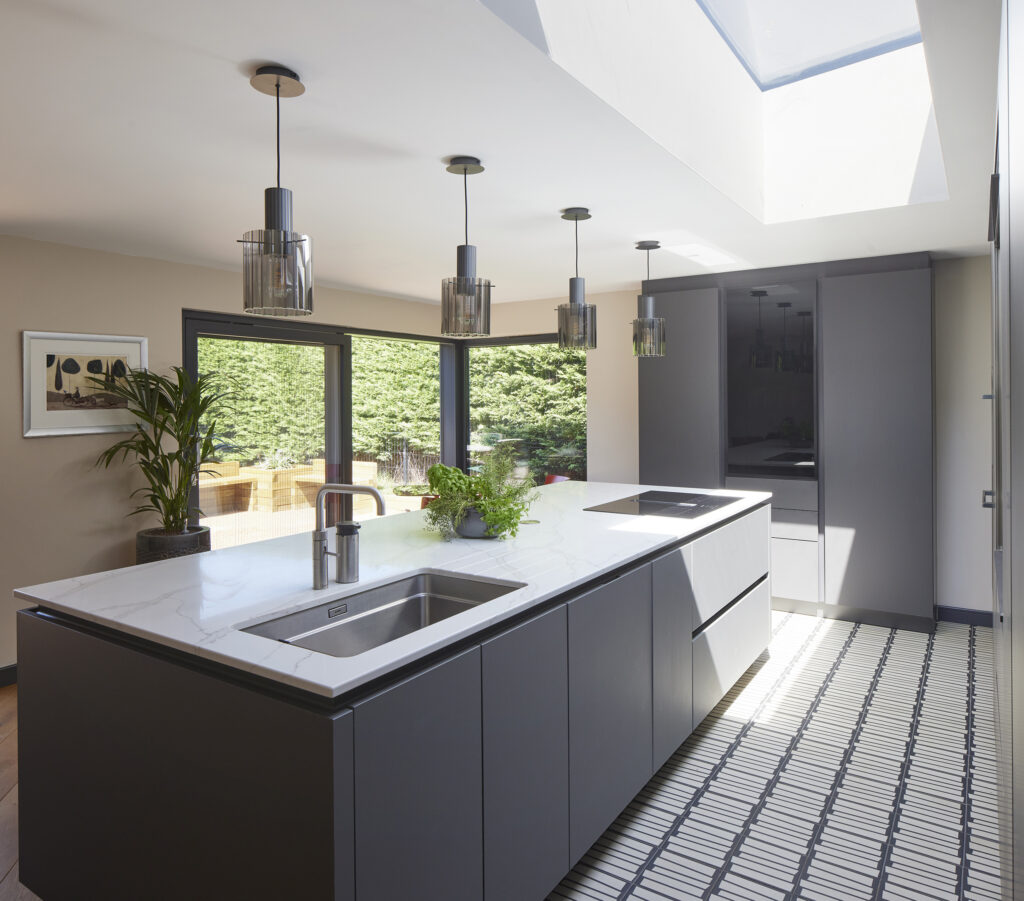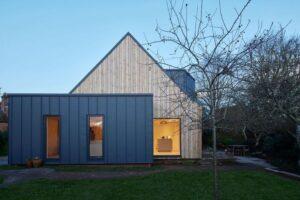The term ‘future proofing’ is often used when describing the design of a house, or adaptations that have been made to a property, but do you know what it really means and who it intends to benefit?
We have found that many people we have worked with assume that future proofing is just to prepare a property for when we get older, or it is only appropriate for those with physical disabilities, and although this is sometimes part of the remit it isn’t the whole scope of work when we refer to future proofing. When done correctly it creates resilient spaces that maximises the whole-life value of a building by anticipating future needs, changes and stresses on the building or layout.
Future proofing a family home.
One obvious example of future proofing is the family home. The design demands on a family home will change enormously over the years and these needs should be inbuilt into a dwelling, to offer on-going flexibility to support the changing dynamics.
A good example of this is adding the ability for a ground floor bedroom. We regularly look at adding in a home office on the ground floor of a house, designed with dimensions to change the use of the room into a bedroom, offering adaption over the space over time. The room could be used for guests staying, with the separation from the main bedrooms offering privacy to all, or the room could be transformed into a permeant bedroom should the owners need to have a ground floor bedroom. At Holly Cottage we created an annex on the ground floor, currently used as an informal living space but designed that is could be turned into a ground floor ensuite bedroom should they need it.
Accessibility in your home.
We do believe that, where possible, it is worth keeping in mind accessibility for all when looking at the design and specification of your home. Building regulations will offer the minimum requirements, often it is worth interrogating these to add future flexibility, along with a generous feeling of space within a property.
Areas such as entranceways, corridors and bathrooms can become stress points for some, for example due to mobility issues, which can be avoided by instilling a more generous space from the initial design stages. This often offers a feeling of space with a better internal flow, offering ultimate flexibility for future needs and the potential for a higher market value as the property is accessible to all.
How to I make a heritage home more accessible?
Retrofitting any property is always harder than designing a new build, with a heritage building it can be a little trickier as the proportions are often not in tune with modern knowledge of accessibility. However, it is still possible to add elements of future proofing into heritage and listed buildings to accommodate your future demands.
There is no blanket term on what can be achieved on listed or heritage properties, as each will have different elements which cannot be changed or challenged and it is worth speaking to an architect to discuss what is possible before you begin any project of this nature, have a read of our listed building article for more information. If your property is listed it is still possible to make small but positive changes such as lowering kitchen counters, adjusted lighting, introducing lightweight acoustic buffers, which should be possible to add without damaging the heritage of your listed home.
I’m young and have no disability, why should I care?
Jos Boys from the DisOrdinary Architecture Project, answered this question well at her talk at the RIBA in February 2024, with saying “you are just not disabled yet”. Although this may sound morbid, or worrying, she went on to say that accessible needs of a person change all the time. A pregnant lady may not be able to go into certain rooms because the smell makes her sick, that changes her needs of the built environment. A person can break their leg at any point, this means their needs then change. Whether it is long term, or short term, at some point in life your needs for the built environment will change. So why not prepare for them now?
Future proofing benefits everyone from the current habitants to future owners of the property. It basically means making the property more accessible for all. By instilling future adaptation into your home, it gives you the peace of mind that you are able to accommodate changes in the future, whilst making a better environment to yourself in the present.
Why should I care about future proofing?
A well designed, future proofed house will grow with you meaning you will not be forced to move due to accessibility issues. It will also be a more attractive property to others on the market, as it will be accessible to all and can be adapted easily to fit another’s needs or tastes.
Future proofing in simple terms, is anticipating your future needs and reducing the effects it has on your life. By looking at what obstacles you might encounter in the future, it can give you the security of knowing you will not be forced to move from your home due to accessibility issues. For example, you may become unable to climb the stairs without assistance, how do we prepare for that?
Is future proofing just preparing for getting elderly?
Yes and no. It enables us to prepare for any incidence where our needs of the built environment may change, this is often for when we get older, and mobility may be more restricted, but there are many who have other health conditions that make the built environment challenging.
At present only 9% of the UK housing stock is classed as accessible, and 24% of our population is registered as living with a disability. Designing your home to be accessible not only protects your future needs, but makes financial sense as it would enable your property to be marketed to those who cannot live in the other 91% of housing stock.
How can my architect help me?
Architects have trained for many years and understand how to design spaces that work, layouts that flow and flexible spaces that create welcoming environments, additionally they understand the regulations set out by local and central government to ensure the design of your home or property complies with these. One key document that architects can we must help clients comply with is Approved Document M, which states accessibility standards.
This is officially only needed for a new build building and only suggest a minimum that buildings need to meet to get signed off by Building Control. As designers we aim to achieve better than this minimum standard if possible, and help our clients add longevity to our homes, creating environments that are appropriate for all.
It is worth noting that if you are retrofitting an existing property, you may not need to comply with all these standards. It also means that it may make it easier for you to retrofit your home to help meet your future needs, with less legislative hassle but it is worth checking with an architect who can help you understand the regulations.
What are examples of future proofing?
Future proofing can cover many areas of design, from fundamental design aspects such as single storey living or having a flexible internal layout for future changes to the plan. However, there are smaller areas of design that can be more easily integrated into your home but which can have a big impact going forward.
Positive adaptations include, having level thresholds, installing wet rooms instead of traditional bathrooms, having wider doorways, lowering counters, using materials to help ‘dampen’ noise intrusion, introducing acoustic insulation, thinking about the location of switches and sockets to make them easy to reach and using non slip flooring.
We design buildings that are able to be redesigned and can be adaptable, for improvement or even to accommodate future financial ability. Get in touch to speak to us about how we can help create a future proofed home for you.


